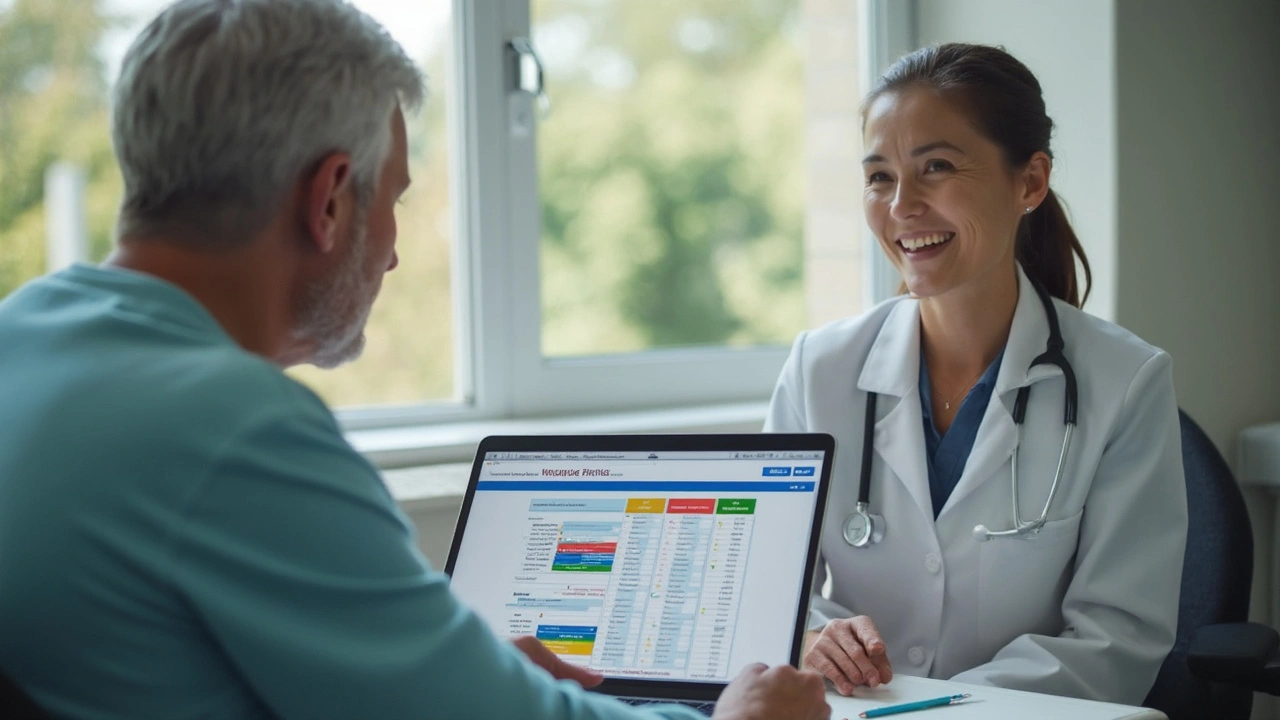Amlodipine: What It Treats and How to Use It
Amlodipine is a calcium channel blocker commonly used to lower high blood pressure and help with chest pain (angina). It relaxes blood vessels so blood flows more easily and the heart doesn't have to work as hard. People like it because it’s usually taken once a day and is effective for long-term control.
How to take amlodipine
Take amlodipine at the same time every day. You can take it with or without food. Most people start on a low dose and your doctor may raise it after checking your blood pressure. Don’t stop suddenly — that can cause your symptoms to get worse. If you miss one dose, take it when you remember unless it’s almost time for the next dose; don’t double up.
Typical adult doses range from 2.5 mg to 10 mg once daily, but your doctor will choose the right dose based on your health and other medicines. Store the tablets at room temperature, away from moisture and heat. Keep them out of reach of children.
Side effects, safety checks, and interactions
The most common side effects are ankle or leg swelling (peripheral edema), feeling tired, and flushing. Swelling happens because blood vessels relax and fluid can collect in the legs. If swelling is bothersome, your doctor may lower the dose or suggest another medicine to reduce it.
Watch for signs of low blood pressure: lightheadedness, fainting, or very rapid heartbeat. If you feel dizzy or faint, sit or lie down and contact your doctor. Seek urgent help for severe chest pain, sudden shortness of breath, or severe allergic reactions (hives, swelling of face or throat).
Amlodipine is processed partly by enzymes in the liver. Some medicines that block or boost these enzymes can change amlodipine levels. Examples include strong antifungals, certain antibiotics, and some HIV drugs. Also tell your doctor about other blood pressure medicines, as combining them can lower your blood pressure too much. Alcohol can increase dizziness or lightheadedness, so be cautious.
Special situations: if you have liver disease, your doctor may start with a lower dose. Pregnant or breastfeeding people should discuss risks and benefits with their healthcare provider. Older adults may be more sensitive to dizziness and falls.
Simple tips that help: check your blood pressure at home so you and your doctor can see how well the medicine works; keep a list of all medicines and supplements you use; report persistent swelling, worsening chest pain, or fainting right away. If you’re ever unsure, call your pharmacist or doctor — that's what they’re there for.
Amlodipine works well for many people, but like any medicine it needs monitoring and occasional adjustments. Use it as prescribed, stay aware of how you feel, and keep open communication with your healthcare team.
10 Alternatives to Lisinopril: Options for Managing Your Blood Pressure
Wondering what to do if Lisinopril isn't right for you? This article breaks down 10 real-world alternatives, including how they work, their pros and cons, and what makes each option unique. Find out which blood pressure medication could be a better fit for your needs—from those that don’t mess with potassium to options better for people with other heart issues. Get quick facts, real tips, and a handy chart to compare them at a glance. Make your next doctor visit way easier and less overwhelming.

